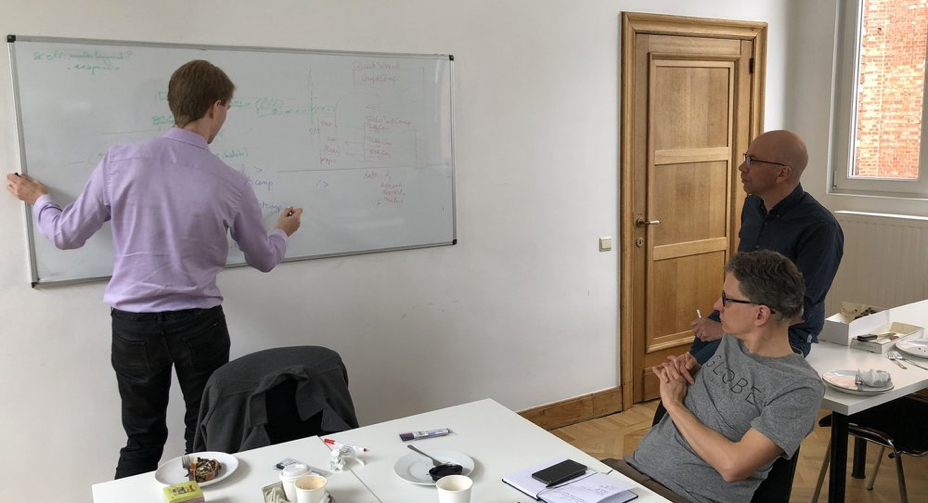CTO and co-founder Laurent Sorber discusses InvestSuite’s unique algorithm

As a Ph.D. in mathematical engineering, full-stack engineer, and co-founder of Radix.ai, a machine learning company, Laurent Sorber is no stranger to finding practical solutions to technical problems. We caught up with Laurent to find out more about how he has turned his problem-solving skills to robo-advisor in his role as CTO and co-founder at InvestSuite.
How did you and Bart come to found InvestSuite together?
While studying for my Ph.D., my fellow students and I would often discuss the problem of how we could invest our own money effectively. At the time, interest rates were quite low, and it was frustrating for us that our purchasing power was decreasing relative to inflation.
Once we had finished our Ph.D.s, we started to work together on an algorithm that would provide a low-cost, low-maintenance passive solution to investing – a B2C robo-advisor. We took this algorithm to KBC Start It (KBC’s start-up incubator), and it was there that we met Bart, who started to mentor us.
Although that first robo-advisor project stalled, I joined KBC as their first data scientist and helped to grow their data scientist division into a team of about 15 Ph.D. students before later leaving to start Radix.ai.
Aside from being B2B, how is InvestSuite different from other robo-advisors? What's different about its underlying technology?
Most robo-advisors use Modern Portfolio Theory (MPT), which was developed by Harry Markowitz in the 1950s. It’s a really solid basis, but it’s 60 or 70 years old and as you can imagine a lot has happened since then.
Every optimal portfolio algorithm tries to optimize two things for every investor - to maximize the returns while minimizing the risk. To do this you have to measure risk, the way Modern Portfolio Theory (MPT) does that is to measure risk as volatility (of the returns). But the problem with volatility is that it treats sudden positive returns as just as risky as sudden negative returns, as well as consistently negative returns as not being risky at all.
This leaves you with an algorithm recommending portfolios that try to achieve a constant return in every situation, which may not be feasible in a bear market and which will underperform in a bull market. Better ways to measure risk have been developed since MPT, and we’ve integrated these latest advances into our algorithm.
How does InvestSuite's algorithm improve on modern portfolio theory?
Investsuite’s algorithm is several generations of improvements removed from MPT. The first generation of improvements is VAR (Value at Risk) which estimates the least amount an investment might lose in a set of worst-case scenarios.
The next generation of improvements is cVAR (Conditional Value at Risk) which measures how large the likely loss is going to be in the average worst-case scenario. We’re not aware of many robo-advisors that use VAR, and only one or two that use cVAR.
Investsuite goes one step further. We have developed an improvement on top of cVAR which we are calling iVAR (Investsuite Value at Risk), and its advantage is that it measures both the size of the losses and how long it will take to recover from those losses.

What does iVAR mean for the average investor?
When we talk to potential investors, they all want the same thing - an account that offers the steady growth of a savings account does but with the returns of the stock market. We cannot provide this, but we can optimize for it - and that's precisely how we’ve defined our measure of risk.
By minimizing our measure of risk, iVAR, we are optimising for the most comfortable growth journey in our portfolios. This means they will behave (as much as possible) like a savings account.
What's your long-term vision for InvestSuite? What would you like to achieve?
What really interests me is to solve the problem that we came across when we were students. I want to go back to my friends and family and provide them with a service that enables them to quickly and easily invest their money in a personalized way.
I want to provide them with a low-cost, low maintenance form of investing which they can onboard in a fully-digital way, and where they don’t have to pay exorbitant amounts to people to manage their money. A fully-digital, low-friction way to invest. Solving that problem would satisfy me.



